In Futurity, Someone Prophetic Sees

Nostradamus never predicted that people would remember him 500 years later, but his reputation for accurate prophecies has nonetheless flourished for centuries. Discuss with your team: why do people want to know their future in advance? Would it benefit them if they did? If someone offered you the opportunity to read a biography of your life, would you?
Michel de Nostredame (December 1503 – July 1566), was a French astrologer, apothecary, physician, and reputed seer, who is best known for his book Les Prophéties (published in 1555), a collection of 942 poetic quatrains allegedly predicting future events. Over the years, he has attracted many supporters, who, along with some of the popular press, because they believe he accurately predicted many major world events. Because his claims were quite vague, they are very subjective and can be used to describe many world events, from Apollo Moon landing in 1969, the Space Shuttle Challenger disaster in 1986, the death of Diana, Princess of Wales in 1997, and the 2001 9/11 attacks on the World Trade Center.

Some poets have also taken a swing at predicting the future. Consider the selections below, then discuss with your team: how seriously were they intended to tell the future? Is poetry (with its often murky meanings) the perfect vehicle for prophecy?

Horace's poem "Ode i. 11" is a short rebuke to a woman named Leuconoë, who is worrying about the future. The poem uses agricultural metaphors to encourage us to embrace the pleasures available in everyday life rather than relying on remote aspirations for the future. Horace, was the leading Roman lyric poet during the time of Rome's Emperor Augustus (also known as Octavian). His poem references some well-known Roman scenes of grape vines and Tuscan scenery. Interestingly, he lived during a turbulent time when Rome transitioned from a republic to an empire and he was certainly at the center of it all as someone close to the emperor's right hand man Maecenas.

"The Second Coming" is one of W.B. Yeats's most famous poems. Written in 1919 soon after the end of World War I, it describes a deeply mysterious and powerful alternative to the Christian idea of the Second Coming—Jesus's prophesied return to the Earth as a savior announcing the Kingdom of Heaven. The poem's first stanza describes a world of chaos, confusion, and pain. The second, longer stanza imagines the speaker

receiving a vision of the future, but this vision replaces Jesus's heroic return with what seems to be the arrival of a grotesque beast. With its distinct imagery and vivid description of society's collapse, "The Second Coming" is also one of Yeats's most quoted poems.
William Butler Yeats (13 June 1865 – 28 January 1939) was an Irish poet, dramatist and writer, and an icon of 20th-century literature. He was a driving force behind the Irish Literary Revival. He won the Nobel Prize in Literature in 1923, and later served two terms as a Senator of the Irish Free State.

With only 9 short lines, this iconic poem liberates the mind. "Fire and Ice" is a popular poem by American poet Robert Frost (1874-1963). It was written and published in 1920, shortly after WWI, and weighs up the probability of two differing apocalyptic scenarios represented by the two elements. The speaker believes fire to be the more likely world-ender of the two, and links it directly with what he or she has "tasted" of "desire." In an ironically conversational tone, the speaker adds that ice—which represents hate and indifference—would "also" be "great" as a way of bringing about the end of the world. Do you think our work would end because of conflict or apathy?

With a capital F, Emily Dickinson personifies "Future", as a being who refuses to reveal to us what is going to happen and acts out God's will. Dickinson lived in a very religious time and many of her poems echo religious faith and about man's struggles against fate and succumbing to nature. Without revealing anything, news is presented through actions, leaving everybody out of the loop. ‘Presents’ here, ostensibly meaning ‘lays something out for inspection’, but hinting at the idea that, as soon as the Future shows its hand, it is no longer the far-off future but the ‘Present’.
Dickinson is perhaps one of the most imaginative minds in American literature having lived much of her life in isolation. She was an eccentric, for she never left her home, never married and most of her friendships were based entirely upon correspondence. Yet, with her pen she writes whimsical, deep and thought-provoking verse that continues to haunt us.
Anthropologists believe that this sort of divination is a practice as old as Neolithic humans. Look briefly (no rabbit holes, please) into the following ancient divination techniques, then discuss with your team: which are still practiced today, and, if they seem hard to believe now, why do you think so many people once believed in them?
According to the Merriam-Webster dictionary, divination is the art or practice that seeks to foresee or foretell future events or discover hidden knowledge usually by the interpretation of omens or by the aid of supernatural powers. It is found in virtually all cultures, and it was ubiquitous in the ancient world, with evidence going back 2nd millennium in Mesopotamia and is attested to throughout the ancient world, primarily the Near East, Egypt, the Levant, Greece, Italy, and China. Despite being very prevalent in ancient cultures, it was sometimes prohibited. Despite attempts to forbid certain kinds of divination, specifically astrology because of its potency, divination remained pervasive in the Roman Empire and continued in use after the advance of Christianity. In short, divination is a means of gaining knowledge that is not obtainable by normal modes of investigation. It serves to handle uncertainty, it can warn or reassure a person, or a whole people, about what the future will bring, and it can illuminate what happened in the past.
The Shang dynasty (1600–1050 B.C.E.) saw advancements made in mathematics, astronomy, and bronze casting technology. It is considered the first historical dynasty of China, meaning it left behind written records. These records are preserved as engravings cut into the so-called oracle bones. The term “oracle bone” refers to ox scapulae (or shoulder blade bones) and tortoiseshells used by Shang rulers for divination. Oracle bones were said to offer a conduit to the spirits of royal ancestors, legendary figures from the past, nature deities, and other powerful spirits. Shang kings asked about natural events, illnesses, dreams, and forecasts for hunting and military endeavors.
Under the direction of the king and his diviner, the bones of cattle and water buffalo and the shells of tortoises were scraped clean, polished, and perhaps soaked. When dry, the bones or shells were chiseled to produce rows of grooves and pits. During the ritual, a diviner would insert a heated rod into the bottom of the grooves and pits to produce hairline cracks on the opposite side of the bone or shell.
The diviner requested information and guidance from the spirit of a royal ancestor and then interpreted the direction of the cracks to provide answers to the king’s question. To record the king’s question, a scribe would then carve it onto the bone or shell surface relative to the cracks.


Later, the scribe would carve the outcome onto the surface of the bones or shells. In one famous example the message pertain to rain and hunting. Most oracle bone inscriptions contain four parts: an introduction, a charge (the topic of the oracle-bone inscription), the prognostication (interpretation of cracks), and verification (the actual outcome of the oracle bone inscription topic).
Comparative astrology analyses the relationship between two or more horoscopes. It usually involves the natal charts of two people, but in theory any charts that mark a birth, event, or initiation of a process can be compared to each other.
Birth chart comparison for two people involved in an intimate relationship is the most common type. However, the comparison of any two natal charts - such as those of parents and children, work colleagues or employees and their supervisors - can throw light on the underlying dynamics of a relationship. Multiple charts might be interpreted for a family. A comparison of different natal charts can reveal a great deal about the character of a relationship: its potentials, possibilities and dangers.
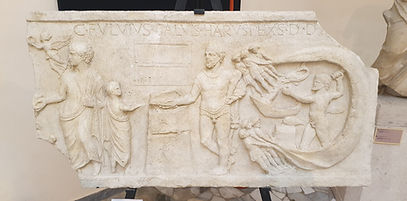
In the religion of ancient Rome, a haruspex[a] was a person trained to practise a form of divination called haruspicy,[b] the inspection of the entrails of sacrificed animals, especially the livers of sacrificed sheep and poultry. Various ancient cultures of the Near East, such as the Babylonians, also read omens specifically from the liver. Roman haruspicy was a form of communication with the gods. Rather than strictly predicting future events, this form of Roman divination allowed humans to discern the attitudes of the gods and react in a way that would maintain harmony between the human and divine worlds
Ornithomancy from the Greek ornis for bird and manteia for divination is the practice of reading omens from the actions of birds followed in many ancient cultures including the Greeks, and is equivalent to the augury employed by the ancient Romans. Ornithomancy dates back to early Greek times, appearing on Archaic vases, as well as in Hesiod and Homer. One notable example from the latter occurs in the Odyssey, when an eagle appears three times, flying to the right, with a dead dove in its talons, an augury interpreted as the coming of Odysseus, and the death of his wife's suitors.



For the Ancient Greeks, birds were also rich in symbolism. The dove symbolised love and fertility; it was associated with Aphrodite. The crow or raven was the messenger of the gods, and it symbolised bad fortune. (Originally, the raven was white. But when the god Apollo sent it to spy on a lover, and the bird returned with the news the lover was cheating on him, Apollo flew into a rage and scorched the raven black all over.) Athena, goddess of wisdom, was usually depicted with a small owl, which was how we came to see the owl as a ‘wise old bird’. Zeus, meanwhile, had an eagle, the Aetos Dios, which was the emblem of his war standard, signifying strength, power and sovereignty.
Alectryomancy is a form of divination in which the diviner observes a bird, several birds, or most preferably a white rooster or cockerel pecking at grain (such as wheat) that the diviner has scattered on the ground. It was the responsibility of the pullularius to feed and keep the birds used. The observer may place grain in the shape of letters and thus discern a divinatory revelation by noting which letters the birds peck at, or the diviner may just interpret the pattern left by the birds' pecking in randomly scattered grain.

In another version, the observer tethers the bird in the center of a circle, around the perimeter of which is marked the alphabet, with a piece of grain at each letter. For each grain the bird pecks, the observer writes down the letter which that grain represents. The observer also replaces each grain as the bird eats it, so that letters may be repeated. The sequence of letters recorded will presumably contain a message.

Chinese pyromancy is the ancient art of divination through fire, or, in other words, seeing the future through burning things. It’s one of the earliest and most fascinating practices in ancient Chinese culture. The practice is predominantly linked with the use of oracle bones, and this specific type of divination played a key role in the political, social, and religious life of early Chinese civilizations. Those skilled in pyromancy were said to be able to read the cracks formed by flames in the remains of animals to read the future and give advice to leaders.
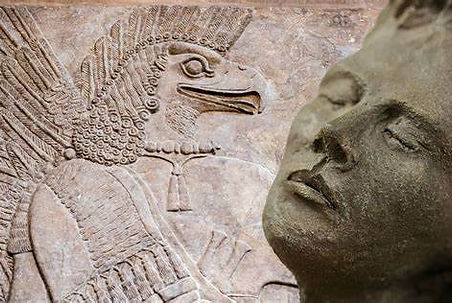.jpg)
Oneiromancy is a form of divination based upon dreams, and also uses dreams to predict the future. Oneirogen plants may also be used to produce or enhance dream-like states of consciousness. Occasionally, the dreamer feels as if they are transported to another time or place, and this is offered as evidence they are in fact providing divine information upon their return. The standard Akkadian Epic of Gilgamesh contains numerous accounts of the prophetic power of dreams. Gilgamesh himself has two dreams foretelling the arrival of Enkidu. Later, Enkidu dreams about the heroes' encounter with the giant Humbaba.

The practice of asking a question, opening a book at random, and interpreting the first passage your eyes (or fingers) hit upon as an answer was once widespread among the Greeks and Romans, the Muslim world, medieval Europe, and elsewhere. The Bible, the Book of Psalms, the Koran, and the works of the Roman poet Virgil were among the books most commonly used. Divination employing Virgil's writing even had its own name, the sortes Virgilianae. (Because it's the 21st century, you can now practice it online.) And you didn't even necessarily need to read the books to use them for divination—in Russia, people would tie books to the ceiling using string, and then pay attention to which way the books swung when certain names were mentioned. The direction of the swing could indicate the name of a future spouse, or girls who would marry within the year.
Hydromancy a method of divination by means of water, including the color, ebb and flow, or ripples produced by pebbles dropped in a pool. It also refers to the entering of a trance by staring at a chosen form of water. The Jesuit M. A. Del Rio (1551–1608) described several methods of hydromancy. The first method described depicts a ring hanging by a string that is dipped into a vessel of water which was shaken. A judgment or prediction is made by the number of times which the ring strikes the sides of the vessel. A second method is when three pebbles are thrown into standing water, and observations are made from the circles that are formed when the objects strike the water. The third method described depended upon the agitation of the water. In Renaissance magic, hydromancy was classified as one of the seven "forbidden arts".
Astragalomancy, also known as cubomancy or astragyromancy, is a form of divination that uses dice specially marked with letters or numbers. Historically, as with dice games, the "dice" were usually knucklebones or other small bones of quadrupeds. Marked astragali (talus bones) of sheep and goats are common at Mediterranean and Near Eastern archaeological sites, particularly at funeral and religious locations. For example, marked astragali have been found near the altar of Aphrodite Ourania in Athens, Greece, suggesting astragalomancy was performed near the altar after about 500 BC.

Scyphomancy is divination using a cup or goblet. This may involve forecasting or representing by using a cup of water and reading the signs specified by certain articles floating on the water. It is considered one of the oldest methods of foretelling the future by means of crystalline reflection, both in ancient Egypt and Persia. In connection with divination, deceit, and robbery, it may be observed that gypsies in Eastern Europe, as in India, often tell fortunes or answer questions by taking a goblet or glass, tapping it, and pretending to hear a voice in the ring which speaks to them. This method of divination is one of the few which may have occurred sporadically, or independently in different places, as there is so much in a ringing, vibrating sound which resembles a voice.
Astrology is a range of divinatory practices, recognized as pseudoscientific since the 18th century, that propose that information about human affairs and terrestrial events may be discerned by studying the apparent positions of celestial objects. Different cultures have employed forms of astrology since at least the 2nd millennium BCE, these practices having originated in calendrical systems used to predict seasonal shifts and to interpret celestial cycles as signs of divine communications.

Throughout most of its history, astrology was considered a scholarly tradition. It was accepted in political and academic contexts, and was connected with other studies, such as astronomy, alchemy, meteorology, and medicine. At the end of the 17th century, new scientific concepts in astronomy and physics (such as heliocentrism and Newtonian mechanics) called astrology into question. Astrology thus lost its academic and theoretical standing, and common belief in astrology has largely declined.
Firefighter, astronaut, investment banker—diviner of the future? If you’re thinking about future careers, consider a career in thinking about the future. Explore the following future-telling occupations, then discuss with your team: should governments regulate this industry, and, if so, how?
Palmistry is the pseudoscientific practice of fortune-telling through the study of the palm. Also known as palm reading, chiromancy, chirology or cheirology, the practice is found all over the world, with numerous cultural variations. Those who practice palmistry are generally called palmists, hand readers, hand analysts, or chirologists. It has played a controversial role in many cultures and the Catholic church expressly banned it.
A pivotal figure in the modern palmistry movement was the Irish William John Warner, known by his sobriquet, Cheiro. After studying under gurus in India, he set up a palmistry practice in London and enjoyed a wide following of famous clients from around the world, including famous celebrities like Mark Twain, Oscar Wilde, Grover Cleveland, Thomas Edison, and even the Prince of Wales.
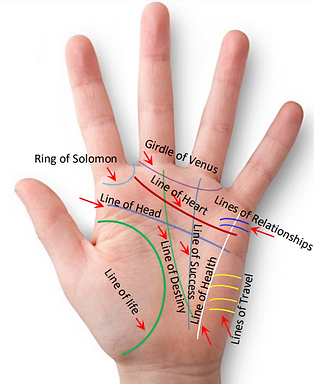
Physiognomy or face reading is the practice of assessing a person's character or personality from their outer appearance—especially the face. Physiognomy as a practice meets the contemporary definition of pseudoscience and is regarded as such by academics because of its unsupported claims; popular belief in the practice of physiognomy is nonetheless still widespread and modern advances in artificial intelligence have sparked renewed interest in the field of study. The practice was well-accepted by ancient Greek philosophers, but fell into disrepute in the 16th century while practised by vagabonds and quacks. I Physiognomy in the 19th century is particularly noted as a basis for scientific racism. Physiognomy as it is understood today is a subject of renewed scientific interest, especially as it relates to machine learning and facial recognition technology. The main interest for scientists today are the risks, including privacy concerns, of physiognomy in the context of facial recognition algorithms.

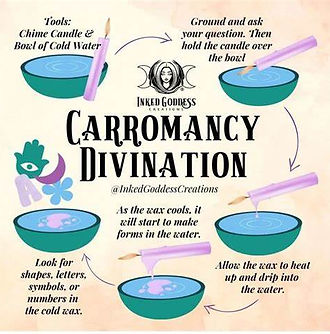.jpg)
Carromancy otherwise known as ceromancy, is a form of divination involving wax. One of the most common methods of carromancy is to heat wax until molten, then to pour it directly into cold water. The shapes and movements of the wax as it cools and solidifies can then allegedly be read to forecast auguries of the future. Another method more commonly practiced in the contemporary era is studying the burning of an ordinary candle. The movements and erratic actions of the flame are then said to predict the future. Carromancy also has roots in ancient Celtic and perhaps later in Ancient Roman times. According to scraps of knowledge salvaged from around the period CE 500, it appears that the candle burned during a druid's vigil was poured into a bowl and then into a clear pool of cold water. The auguries for the future could then be read.

.jpg)
Tasseography is a divination or fortune-telling method that interprets patterns in tea leaves, coffee grounds, or wine sediments. The terms derive from the French word tasse (cup), which in turn derives from the Arabic loan-word into French tassa. Tasseomancy followed the trade routes of tea and coffee and was practiced by both Baltic and Slavic nations. It is closely related to the Romani people, whose nomadic lifestyle contributed to the spread of the practice. While tea leaf reading originated in China, likely soon after the creation of tea, various regions practice it with slight variations. Indicating that this form of divination was an oral tradition.
Coffee reading is traditionally practiced using Arabic or Turkish coffee, as they produce a very thick sediment. The coffee in the cup is consumed, and the sediment is left to settle. There are several variations of coffee reading. They commonly require for the cup to be covered with the saucer and turned upside-down. In the Turkish tradition, coffee-readers often interpret the cup as being divided into horizontal halves: symbols appearing on the bottom half are interpreted as messages regarding the past, and symbols on the top half are messages regarding the future. The cup may also be interpreted in vertical halves to determine "yes" or "no" answers as well as the overall outcome of the events represented by symbols.


Cartomancy is fortune-telling or divination using a deck of cards. Forms of cartomancy appeared soon after playing cards were introduced into Europe in the 14th century. Practitioners of cartomancy are generally known as cartomancers, card readers, or simply readers. Cartomancy using standard playing cards was the most popular form of providing fortune-telling card readings in the 18th, 19th, and 20th centuries. The standard 52-card deck is often augmented with jokers or even with the blank card found in many packaged decks.
In English-speaking countries, the most common form of cartomancy is generally tarot card reading. From their Italian roots, tarot-playing cards spread to most of Europe, evolving into a family of games that includes German Grosstarok and modern games such as French Tarot and Austrian Königrufen. Thus, there are two distinct types of tarot packs in circulation: those used for card games and those used for divination.
Tarot was invented in Italy in the 1430s during an “experimental period” where queen figures were added to court card sets that previously only included the king and male figures. Italian cultural symbols such as coins (Denari in Italy), swords (Spade), and cups (Coppe) were heavily embedded in these card series.
Historically, Pliny the Elder describes use of the crystal ball in the 1st century CE by soothsayers. Contemporary Western images of fortune telling grow out of folkloristic reception of Renaissance magic, specifically associated with Romani people. During the 19th and 20th century, methods of divination from non-Western cultures, such as the I Ching, were also adopted as methods of fortune telling in western popular culture.
In 1982, the sociologists Danny L., and Lin Jorgensen found that, "when it is reasonable, [fortune tellers] comply with local laws and purchase a business license." However, in the United States, a variety of local and state laws restrict fortune telling, require the licensing or bonding of fortune tellers, or make necessary the use of terminology that avoids the term "fortune teller" in favor of terms such as "spiritual advisor" or "psychic consultant." There are also laws that outright forbid the practice in certain districts. For instance, fortune telling is a class B misdemeanor in the state of New York. Under New York State law, S 165.35:

A person is guilty of fortune telling when, for a fee or compensation which he directly or indirectly solicits or receives, he claims or pretends to tell fortunes, or holds himself out as being able, by claimed or pretended use of occult powers, to answer questions or give advice on personal matters or to exercise, influence or affect evil spirits or curses; except that this section does not apply to a person who engages in the aforedescribed conduct as part of a show or exhibition solely for the purpose of entertainment or amusement.
Lawmakers who wrote this statute acknowledged that fortune tellers do not restrict themselves to "a show or exhibition solely for the purpose of entertainment or amusement" and that people will continue to seek out fortune tellers even though fortune tellers operate in violation of the law. In the states of Minnesota, North Carolina, Oklahoma, Pennsylvania, and Wisconsin, all forms of fortune-telling are illegal. Other countries such as Australia and Saudi Arabia also deem fortune telling illegal.
Additionally, fortune-telling readings and predictions made by horoscopes, for example, are often general enough to apply to anyone. In cold reading, for example, readers often begin by stating general descriptions and continuing to make specifics based on the reactions they receive from the person whose life they are predicting. The tendency for people to deem general descriptions as being representative to themselves has been termed the Barnum effect and has been studied by psychologists for many years.
The word oracle comes from the Latin verb ōrāre, "to speak" and properly refers to the priest or priestess uttering the prediction. In extended use, oracle may also refer to the site of the oracle, and the oracular utterances themselves, are called khrēsmoí in Greek. Oracles were thought to be portals through which the gods spoke directly to people. In this sense, they were different from seers (manteis) who interpreted signs sent by the gods through bird signs, animal entrails, and other various methods. The most important oracles of Greek antiquity were Pythia (priestess to Apollo at Delphi). The Delphic Oracle exerted considerable influence throughout Hellenic culture. Distinctively, this woman was essentially the highest authority both civilly and religiously in male-dominated ancient Greece. She responded to the questions of citizens, foreigners, kings, and philosophers on issues of political impact, war, duty, crime, family, laws—even personal issues.
The concept of a Greek oracle is so popular that it was an integral part of the mythology inspired fictional series Percy Jackson.


The Oxford English dictionary defines soothsaying as ‘t he art of being able to foresee the future.’ A sooth tells the truth, and by deduction, a soothsayer is someone who tells the truth about a future event. Historical research has shown that soothsaying has origins in several unique realms, notably lay religion, pop culture, and magic. Indeed, every culture has contributed to the vast body of knowledge that comprises the comprehensive history of soothsaying practices. One significant example emerges in late medieval England, where soothsayers provided an alternative to law court justice. They revealed the truth to the parties involved directly rather than remediating the conflicts.

Their predictive abilities were renowned in ancient Rome, with tales of soothsayers telling Julius Caesar to beware the ides of March (read Shakespeare's play Julius Caesar!). Unfortunately, the iconic Emperor discounted their opinion, much to his detriment. Later in medieval times, with the rise of the Christian Church, they also generated a lot of fear among those who didn’t understand soothsaying and saw it as the work of Satan. And it was women who suffered the most because of this misunderstanding.

Shamanism is a spiritual practice that involves a practitioner (shaman) interacting with the spirit world through altered states of consciousness, such as trance. The goal of this is usually to direct spirits or spiritual energies into the physical world for the purpose of healing, divination, or to aid human beings in some other way.
The Modern English word shamanism derives from the Russian word шаман, šamán, which itself comes from the word samān from a Tungusic language, an ancient language spoken by people in the Asian steppe. There are uncertainties of the origin of the word shaman, some stating India, while others believe it is from Siberia. There are many definitions of shamanism and this term can almost be applied to any regional indigenous group where a religious elder performs ritualistic practices with elements such as chanting, drumming, medicine, healing, communicating to spirits and divination.
Despite structural implications of colonialism and imperialism that have limited the ability of Indigenous peoples to practice traditional spiritualities, many communities are undergoing resurgence through self-determination and the reclamation of dynamic traditions. For the isolated nomadic Tuvan (with an estimated population of 3000 people surviving from this tribe) in Russia, the art of shamanism has been preserved until today due to its isolated existence, allowing it to be free from the influences of other major religions.
The belief in witches has been found throughout history in a great number of societies worldwide. Most of these societies have used protective magic or counter-magic against witchcraft, and have shunned, banished, imprisoned, physically punished or killed alleged witches. The Law Code of Hammurabi (18th century BCE) allowed someone accused of witchcraft (harmful magic) to undergo trial by ordeal, by jumping into a holy river. If they drowned, they were deemed guilty and the accuser inherited the guilty person's estate. If they survived, the accuser's estate was handed over instead.

European witch-hunts and witch trials in the early modern period led to tens of thousands of executions. While magical healers and midwives were sometimes accused of witchcraft themselves, they made up a minority of those accused. European belief in witchcraft gradually dwindled during and after the Age of Enlightenment.
Persecution of witches continue today. In Saudi Arabia practicing witchcraft and sorcery is a crime punishable by death and the country has executed people for this crime as recently as 2014
Clairvoyance (/klɛərˈvɔɪ.əns/; from French clair 'clear' and voyance 'vision') is the claimed ability to acquire information that would be considered impossible to get through scientifically proven sensations, thus classified as extrasensory perception, or "sixth sense". Any person who is claimed to have such ability is said to be a clairvoyant ('one who sees clearly'). Claims for the existence of paranormal and psychic abilities such as clairvoyance have not been supported by scientific evidence. According to scientific research, clairvoyance is generally explained as the result of confirmation bias, expectancy bias, fraud, hallucination, self-delusion, sensory leakage, subjective validation, wishful thinking or failures to appreciate the base rate of chance occurrences and not as a paranormal power.
One skeptic, magician James Randi, had a longstanding offer of U.S. $1 million—"to anyone who proves a genuine psychic power under proper observing conditions." To refute those who say there is no ESP, one need only produce a single person who can demonstrate a single, reproducible ESP phenomenon. So far, no such person has emerged. Randi's offer has been publicized for three decades and dozens of people have been tested, sometimes under the scrutiny of an independent panel of judges. Still, nothing.
Ifá or Fá is a divination system originating from Yorubaland in West Africa (Nigiera, Benin, Togo). According to Ifá teaching, the divinatory system is overseen by an orisha spirit, Orunmila, who is believed to have given it to humanity. Ifá is organised as an initiatory tradition, with an initiate called a babaláwo (father of wisdom). They use either the divining chain known as Ọ̀pẹ̀lẹ̀ (right), or the sacred palm or kola nuts called Ikin, on the wooden divination tray called Ọpọ́n Ifá (right) to mathematically calculate which Odu, their set of laws and rules, to use for what problem. Interestingly, Ifá has spread to many parts of the world, including Mexico, Cuba and United States.
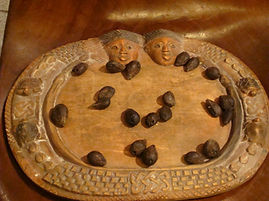
.jpg)
Hindu astrology, also called Indian astrology, jyotisha and more recently Vedic astrology, is the traditional Hindu system of astrology,one of the six auxiliary disciplines in Hinduism that is connected with the study of the Vedas. The Vedanga Jyotisha is one of the earliest texts about astronomy within the Vedas. Some scholars believe that the horoscopic astrology practiced in the Indian subcontinent came from Hellenistic influences. The word Jyotish, which means light, such as that of the sun or the moon or a heavenly body.

Astrological concepts are pervasive in the organization of the Hindu calendar and holidays and in making major decisions such as those about marriage, opening a new business, or moving into a new home. Many Hindus believe that heavenly bodies, including the planets, have an influence throughout the life of a human being, and these planetary influences are the "fruit of karma".
The I Ching or Yijing (Chinese: 易經) usually translated Book of Changes or Classic of Changes, is an ancient Chinese divination text that is among the oldest of the Chinese classics. The I Ching was originally a divination manual in the Western Zhou period (1000–750 BC). Over the course of the Warring States and early imperial periods (500–200 BC), it transformed into a cosmological text with a series of philosophical commentaries known as
the Ten Wings. After becoming part of the Chinese Five Classics in the 2nd century BC, the I Ching was the basis for divination practice for centuries across the Far East and was the subject of scholarly commentary.
I Ching divination involves bundles of yarrow stalks are manipulated to produce sets of six apparently random numbers ranging from 6 to 9. Each of the 64 possible sets corresponds to a hexagram, which can be looked up in the I Ching. The

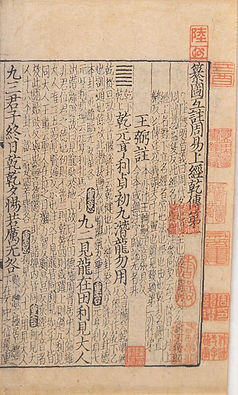
hexagrams are arranged in an order known as the King Wen sequence. The interpretation of the readings found in the I Ching has been discussed and debated over the centuries. Many commentators have used the book symbolically, often to provide guidance for moral decision-making, as informed by Confucianism, Taoism and Buddhism. The hexagrams themselves have often acquired cosmological significance and been paralleled with many other traditional names for the processes of change such as yin and yang and Wuxing.
The Four Pillars of Destiny, also known as "Ba-Zi", which means "eight characters" or "eight words" in Chinese, is a Chinese astrological concept that a person's destiny or fate can be divined by the two sexagenary cycle characters assigned to their birth year, month, day, and hour. This type of cosmological astrology is also widely used in South Korea, Japan, and Vietnam. Four Pillars of Destiny can be dated back to the Han Dynasty, but it was not systematic as it is known today.
-
Year Pillar: Determines life from age 1 to 16.
-
Month Pillar: Determines life from age 17 to 32.
-
Day Pillar: Determines life from age 33 to 48.
-
Hour Pillar: Determines life from age 49 onwards.

Moon blocks or jiaobei (Chinese: 筊杯 or 珓杯), also poe (Chinese: 桮), are wooden divination tools originating from China, which are used in pairs and thrown to seek divine guidance in the form of a yes or no question. They are made out of


wood or bamboo and carved into a crescent shape. A pair of clam shells can also be used. Each block is round on one side (known as the yin side) and flat on the other (known as the yang side). It is one of the more commonly used items found in Chinese traditional religion and are used in temples and home shrines along with fortune sticks, both of which are often used together when requesting an answer from the Deities.


Omikuji (御御籤/御神籤/おみくじ) are random fortunes written on strips of paper at Shinto shrines and Buddhist temples in Japan. Literally "sacred lot", these are usually received by making a small offering and randomly choosing one from a box, hoping for the resulting fortune to be good. As of 2024, vending machines sometimes dispense omikuji.
The omikuji predicts the person's chances of their hopes coming true, of finding a good match, or generally matters of health, fortune, life, etc. When the prediction is bad, it is a custom to fold up the strip of paper and attach it to a pine tree or a wall of metal wires alongside other bad fortunes in the temple or shrine grounds. A purported reason for this custom is a pun on the word for pine tree (松, matsu) and the verb 'to wait' (待つ, matsu), the idea being that the bad luck will wait by the tree rather than attach itself to the bearer. In the event of the fortune being good, the bearer has two options: they can also tie it to the tree or wires so that the fortune has a greater effect or they can keep it for luck. Omikuji are available at many shrines and temples, and remain one of the traditional activities related to shrine or temple-going.

The Ouija, also known as a Ouija board, spirit board, talking board, or witch board, is a flat board marked with the letters of the Latin alphabet, the numbers 0–9, the words "yes", "no", and occasionally "hello" and "goodbye", along with various symbols and graphics. It uses a planchette (a small heart-shaped piece of wood or plastic) as a movable indicator to spell out messages during a séance. Participants place their fingers on the planchette, and it is moved about the board to spell out words. The name "Ouija" is a trademark of Hasbro (inherited from Parker Brothers), but is often used generically to refer to any talking board.
One of the first mentions of the automatic writing method used in the Ouija board is found in China around 1100 AD, in historical documents of the Song dynasty. The method was known as fuji "planchette writing". For the modern day game board, the popular belief that the word Ouija comes from the French (oui) and German (ja) words for yes is a misconception. In fact, the name was given from a word spelled out on the board when medium Helen Peters Nosworthy asked the board to name itself. When asked what the word meant, it responded "Good Luck". The Ouija phenomenon is considered by the scientific community to be the result of the ideomotor response.
A crystal ball is a crystal or glass ball commonly used in fortune-telling. It is generally associated with the performance of clairvoyance and scrying. Used since Antiquity, crystal balls have had a broad reputation with witchcraft, including modern times with charlatan acts and amusements at circus venues, festivals, etc. By the fifth century AD, scrying using crystal balls was widespread within the Roman Empire and was condemned by the early Christian Church as heretical.
One famous example of a crystal ball was among the grave-goods of the Merovingian King, Childeric I (c. 437–481 AD). The grave-goods were discovered in 1653. In 1831, they were stolen from the royal library in France where they were being kept.

Even though they are often associated with Chinese cuisine overseas, fortune cookies are not of Chinese origin. Inside their crisp, sugary cookie wafer, hides a "fortune", an aphorism, or a vague prophecy. The message inside may also include a Chinese phrase with translation and/or a list of lucky numbers used by some as lottery numbers. The exact origin of fortune cookies is unclear, though various immigrant groups in California claim to have popularized them in the early 20th century. They most likely originated from cookies made by Japanese immigrants to the United States in the late 19th or early 20th century. The Japanese version did not have the Chinese lucky numbers and were eaten with tea.

As far back as the 19th century, a cookie very similar in appearance to the modern fortune cookie was made in Kyoto, Japan, and there is a Japanese temple tradition of random fortunes, called omikuji. Subsequently, David Jung, founder of the Hong Kong Noodle Company in Los Angeles, made a competing claim that he invented the cookie in 1918. On the other hand, Seiichi Kito, the founder of Fugetsu-do of Little Tokyo in Los Angeles, also claims to have invented the cookie. Kito claims to have gotten the idea of putting a message in a cookie from Omikuji (fortune slip) which are sold at temples and shrines in Japan. According to his story, he sold his cookies to Chinese restaurants where they were greeted with much enthusiasm in both the Los Angeles and San Francisco areas, before spreading.

Fortune cookies moved from being a confection dominated by Japanese-Americans to one dominated by Chinese-Americans sometime around World War II. One theory for why this occurred is because of the Japanese American internment during World War II, which forcibly put over 100,000 Japanese-Americans in internment camps, including those who had produced fortune cookies. This gave an opportunity for Chinese manufacturers. The fortune cookie industry changed dramatically after the fortune cookie machine was invented by Edward Louie in the late 1960s. The machine allowed for mass production of fortune cookies which subsequently allowed the cookies to drop in price to become the novelty and courtesy dessert. There are approximately 3 billion fortune cookies made each year globally, the majority of them consumed in the US.
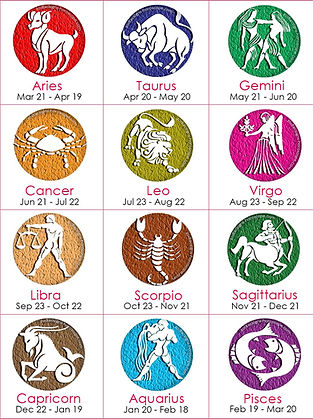
Horoscope is an astrological chart or diagram representing the positions of the Sun, Moon, planets, astrological aspects and sensitive angles at the time of an event, such as the moment of a person's birth. The word horoscope is derived from the Greek ōra and scopos meaning "time" and "observer". Even though it is considered pseudoscientific since the 18th century, horoscope columns are often featured in print and online newspapers. Popular astrology includes the Western astrology of houses based on month of birth and Chinese astrology based on your birth year.
The Zodiac, or "circle of animals" is a zone or belt in space projected onto the celestial sphere through which, from our viewpoint, the planets move. A symbolic geometric construction around 16 degrees wide, it is divided into 12 signs, each of 30 degrees longitude (making 360 degrees, a full circle), with the ecliptic, the apparent path of the Sun, as its middle line.
Astrology despite not having any scientific proof is popular with people as a source of entertainment. Susan Miller is a very well-followed astrologer who publishes books and monthly predictions on her website and social media. Her website had 310 million views in 2018, attesting to how horoscopes remain very prominent in modern life.
Not all fortune tellers are mystics. Michio Kaku is an award-winning theoretical physicist whose side business is predicting the future in books like Physics of the Future and The Future of Humanity. Explore some of his predictions, then discuss with your team: which of his predictions do you find too alarmist? Which ones do you most look forward to?

Equal parts theoretical physicist, futurist, and popular science communicator, Kaku studies cutting-edge science and technology in order to understand the future. A graduate of Harvard University and Berkeley, Kaku has spent 25 years as a professor of theoretical physics at the City College of New York. He says, one threat to our survival is much more immediate than others.
When most people look to the future, they envision a world in which flying cars soar high above us as we edit diseases out of our genes.
But to Kaku, one innovation looms largest, blotting out other sights: drones. In an interview with Futurism at the World Government Summit last month, the topic dominated the conversation. Kaku has been warning of the dangers of militarized drone systems for years. The threat of military drones, he says, is absolute. "The only immediate danger is automatic killing machines," he said. Those who portend a future filled with Terminator-style robots armed with artificial superintelligence ignore real and imminent dangers. "That’s not going to happen for another hundred years, so I’m not worried."
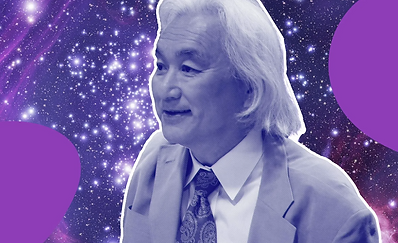
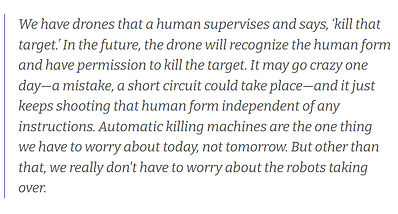
Here are some of Kaku's other predictions on a variety of topics:
-
Extraterrestrial Life: "Within this century, we will make contact with an alien civilization by listening in on their radio communications."
-
The Evolution of AI: "Simple tasks done by humans are way beyond what a robot can do. But, as the decades go by, they will become as smart as a mouse, then rat, then a cat, dog, and monkey. By that point, they might become dangerous and even replace humans, near the end of the century."
-
Colonizing Alien Worlds: "We need an insurance policy, a backup plan. The dinosaurs didn't have a space program, and that's why they're not here today. No one's saying we should leave the Earth and go to Mars, but a settlement on Mars is a definite possibility."
-
Bitcoin: "You cannot stop virtual currency. As far as, 'what are things worth?' Things are worth whatever your willing to pay for it....so it's gambling. It's speculation. As far as my personal attitude towards it, it's not productive. Bitcoin is not a productive industry."
-
Driverless Cars: "As transportation is digitized in the next decade, driverless cars, guided by GPS and radar, will share our highways. 'Traffic accidents' and 'traffic jams' will become archaic terms. Thousands of lives will be saved every year."
While those predicting the future cast their gaze forward to tomorrow and the days after, some artists cast their gaze (and occasionally their glaze) toward those making the predictions. Review the following artworks with your team, then discuss with your team: what are they trying to tell us?
The Fortune Teller is a painting by Italian Baroque artist Michelangelo Merisi da Caravaggio. It exists in two versions, both by Caravaggio. The 1595 one is the second version. The painting's models are believed to be Caravaggio's companion, the Sicilian painter Mario Minniti), and a Romani girl reading his palm. The boy looks pleased as he gazes into her face, and she returns his gaze. But, if you look closer, you can see that she removing his ring as she gently strokes his hand. Therefore, the two main themes of this painting are vanity and deceit through seduction.
.jpg)
The 1594 Fortune Teller aroused considerable interest among younger artists and the more avant garde collectors of Rome, but, according to Mancini, Caravaggio's poverty forced him to sell it for the low sum of eight scudi. It entered the collection of a wealthy banker and connoisseur, the Marchese Vincente Giustiniani, who became an important patron of the artist.
An oil painting by de la Tour, the work was uncovered in about 1960 and purchased that year by the Metropolitan Museum of Art in New York. Its authenticity has been questioned in the intervening years, notably by the English art historian Christopher Wright, but The Fortune Teller is generally accepted as La Tour's work.
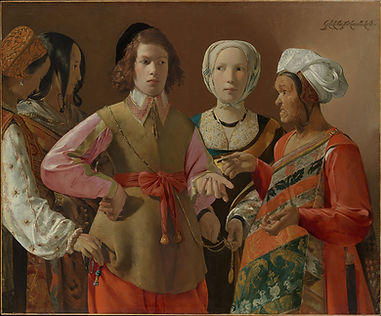
The painting catches a moment in which a wealthy young man is having his fortune told by the old woman (right). The women in the painting are likely Romani people and the painting shows the popular stereotype of these people as thieves. As fortune-telling is forbidden by the Church and some cases by law, the young man is taking a risk by having his fortune told. While he is fixated with the act, the leftmost woman is stealing the coin purse from his pocket, while her companion in profile has a hand ready to receive the loot. The pale-faced girl on the boy's left is less clearly Romani, but is also in on the act as she cuts a medal worn by the boy from its chain. This is like an ancient version of Ocean's 11.

A prolific and innovative master in various media such as painting, drawing, decorative sculpture, and theatrical art, Vrubel is generally characterized as one of the most important artists in Russian symbolist tradition and a pioneering figure of Modernist art. For more of his masterpieces, check out this link.
This painting with its dark moody tone and rough brush strokes reflect an ominous mood. The background with its busy patterns look like the inside of a gypsy caravan or tent. The fortune teller's deep eyes takes attention away from the cards on the floor. Her eyes feel like they can look into the soul of the viewer.
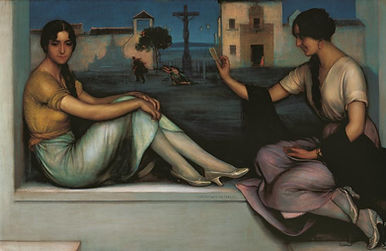
Julio Romero de Torres is an important Spanish painter from Cordoba and his works represented the symbolism movement. Many of his works feature local women engaged in local cultural activities.
On the sill of a window, two women sitting in profile and a similar role, symbolizing the duality so often present in his paintings. On the right, one of them with popular attire and legs curled back, does not seem to get the attention of the other girl resting on the sill itself, while her gesture denoting an apparent melancholy transpires loving concern.
And again, between fortune and cityscape background a sketchy and secondary scene: a woman who wants to keep a man in connection with the main theme of the painting: love, or rather, heartbreak. The cross in the background in the center symbolizes how religion is an authority figure in the marriage and how the women escape these ideological constraints through fortune telling. Her downcast eyes convey contemplation and despair.
Helena Schjerfbeck was a Finnish modernist painter known for her realist works and self-portraits, and also for her landscapes and still lifes. Throughout her long life her work changed dramatically, beginning with French-influenced realism and plein air painting. It gradually evolved towards portraits and still life paintings.
This lady is rendered in a classic 3/4 approach (bust-like), yet a simplified drawing of her face in black and well-defined lines references the woodblock prints, a technique used also by the German expressionists. Her pensive and rather sad look introduce a gloomy atmosphere. Is it because she saw in her cards a misfortune coming up?

José Luis Cuevas (February 26, 1934 – July 3, 2017) was a Mexican artist, he often worked as a painter, writer, draftsman, engraver, illustrator, and printmaker. Cuevas was one of the first to challenge the then dominant Mexican muralism movement as a prominent member of the Generación de la Ruptura (English: Breakaway Generation). He was a mostly self-taught artist, whose styles and influences are moored to the darker side of life, often depicting distorted figures and the debasement of humanity. He had remained a controversial figure throughout his career, not only for his often shocking images, but also for his opposition to writers and artists who he feels participate in corruption or create only for money.
.jpg)
.jpg)

Georges Bizet (né Alexandre César Léopold Bizet; 25 October 1838 – 3 June 1875) was a French composer of the Romantic era. Best known for his operas in a career cut short by his early death, Bizet achieved few successes before his final work, Carmen, which has become one of the most popular and frequently performed works in the entire opera repertoire.
The opera is written in the genre of opéra comique with musical numbers separated by dialogue. It is set in southern Spain and tells the story of the downfall of Don José, a naïve soldier who is seduced by the wiles of the fiery gypsy Carmen. José abandons his childhood sweetheart and deserts from his military duties, yet loses Carmen's love to the glamorous torero Escamillo,

after which José kills her in a jealous rage. The depictions of proletarian life, immorality, and lawlessness, and the murder of the main character on stage, broke new ground in French opera and were highly controversial. Carmen and José enter with the smugglers and their booty ("Écoute, écoute, compagnon"); Carmen has now become bored with José and tells him scornfully that he should go back to his mother. Frasquita and Mercédès amuse themselves by reading their fortunes from the cards; Carmen joins them and finds that the cards are foretelling her death, and José's.
"O Fortuna" is a movement in Carl Orff's 1935–36 cantata Carmina Burana. It begins the opening and closing sections, both titled "Fortuna Imperatrix Mundi". The cantata is based on a medieval Goliardic poetry collection of the same name, from which the poem "O Fortuna" provides the words sung in the movement. It was well-received during its time, and entered popular culture through use in other musical works, advertisements, and soundtracks beginning in the late 20th century.
Orff was inspired both by the poem and the medieval symbol of the Rota Fortunae, or Wheel of Fortune, which the goddess Fortuna spins at random, causing some people to suffer while others find wealth. The Rota Fortunae appears in a version of the poetry collection known as the Codex Buranas. The repetition of the musical accompaniment draws a comparison to the spinning of the wheel.




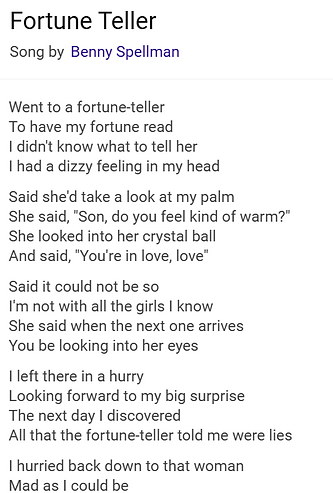
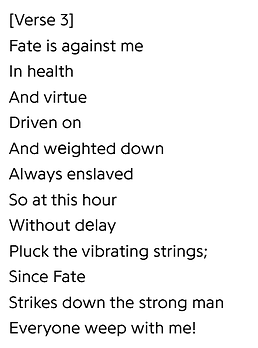
"Fortune Teller" is a song written by Allen Toussaint under the pseudonym Naomi Neville and first recorded by Benny Spellman. It was issued in 1962 as B-side of the single "Lipstick Traces (on a Cigarette)" on Minit Records (Cat 644).
It tells the story of a young man who is pleased to learn from a fortune teller that he will find love "When the next sun arrives". Next day he returns, angry that nothing has happened, but falls in love with the fortune teller. They get married and are as "happy as we could be", and he gets his "fortune told for free".
Alastair Ian Stewart (born 5 September 1945) is a Scottish-born singer-songwriter and folk-rock musician who rose to prominence as part of the British folk revival in the 1960s and 1970s. He developed a unique style of combining folk-rock songs with tales of characters and events from history. The fifth
Nostradamus by Al Stewart
In the east the wind is blowing the boats across the sea
And their sails will fill the morning and their cries ring out to me
Oh, Oh
Oh, the more it changes, the more it stays the same
And the hand just re-arranges the players in the game
Oh, I had a dream, it seemed I stood alone
And the veil of all the years
Goes sinking from my eyes like a stone
A king shall fall and put to death by the English parliament shall be
Fire and plague to London come in the year of six and twenties three
An emperor of France shall rise who will be born near Italy
His rule shall cost his empire dear, Napoloron his name shall be
From Castile does Franco come and the Government driven out shall be
An English king seeks divorce, and from his throne cast down is he
One named Hister shall become a captain of Greater Germany
No law does this man observe and bloody his rise and fall shall be
Man, man, your time is sand, your ways are leaves upon the sea
I am the eyes of Nostradamus, all your ways are known to me
Man, man, your time is sand, your ways are leaves upon the sea
I am the eyes of Nostradamus, all your ways are known to me
In the new lands of America three brothers now shall come to power
Two alone are born to rule but all must die before their hour
Two great men yet brothers not make the north united stand
Its power be seen to grow, and fear possess the eastern lands
Three leagues from the gates of Rome a Pope named Pol is doomed to die
A great wall that divides a city at this time is cast aside
These are the signs I bring to you to show you when the time is nigh
Man, man, your time is sand, your ways are leaves upon the sea
I am the eyes of Nostradamus, all your ways are known to me
.jpg)
release, Past, Present and Future (1973), was Stewart's first album to receive a proper release in the United States, via Janus Records. It echoed a traditional historical storytelling style and contained the song "Nostradamus," a long (9:43) track in which Stewart tied into the rediscovery of the claimed seer's writings by referring to selected possible predictions about 20th century people and events. While it ran too long for mainstream radio airplay at that time, the song became a hit on many US FM and college radio stations, which were flexible about runtime.
Suzanne Nadine Vega (born July 11, 1959) is an American singer-songwriter of folk-inspired music. The original a cappella recording of one of her songs was used as a test during the creation of the MP3 format. The role of her song in the development of the MP3 compression prompted Vega to be given the title of "The Mother of the MP3.

[Verse 1]
Let's tell the future
Let's see how it's been done
By numbers, by mirrors, by water
By dots made at random on paper
By salt, by dice
By meal, by mice
By dough of cakes
By sacrificial fire
By fountains, by fishes
Writings in ashes
Birds, herbs
Smoke from the altar
[Chorus]
A suspended ring or the mode of laughing
Pebbles drawn from a heap
One of these things
Will tell you something
[Verse 2]
Let's tell the future
Let's see how it's been done
By dreams, by the features, by letters
By dropping hot wax into water
By nails reflecting the rays of the sun
By walking in a circle
By red hot iron
By passages in books
A balanced hatchet
Certain methods of divination seem more reliable than they are. Explore the following examples and terms, then discuss with your team: why is divination enjoying a resurgence amongst young people today? Is the future trending?
Some stores and booksellers have seen an increase in sales on spiritual items. House of Intuition, a spirituality-based line of stores and services, was built out of "desperation," according to co-founder Marlene Vargas. She and co-founder Alex Naranjo say they became interested in the topic during some moments of great change.
"I think people go to tarot readings or seek something outside of religion when we're really in that vulnerable state," Vargas said. "When somebody came to me and said, 'you should have a Tarot reading,' I would probably never have done that, had everything been fine and dandy in my life. But because everything was falling apart, I was desperate."
Tarot card or oracle card readings to provide guidance and reflection; candle-burning rituals to set intentions and to manifest goals; crystals that radiate energy -- these are just some of the tools they say they learned to use in a time of loss and confusion.
These kinds of practices appear to be on the rise -- local businesses like Brujas of Brooklyn and even Barnes & Noble also report a drastic rise in requests or purchases of these services and items. According to Shannon DeVito, the director of books at Barnes and Noble, the size of their self-transformation business grew significantly through 2019, and then more than doubled from 2020 to 2021. "Younger audiences and teens are also now discovering tarot decks, manifestation, witchcraft, and crystals (oftentimes with the help of viral readings on TikTok paired with plentiful time at home)," DeVito told ABC News in a statement. TikTok currently has over 30 billion views on the #astrology tag and roughly 20 billion views on the #tarot tag.
Millennials and Gen Z are increasingly engaging in fortunetelling practices that are steeped in decades of tradition and spirituality. Even though we grew up with technology and social media, today, this ancient notion of fortune telling continues to gain popularity among young people through astrology apps and social media fortunetellers. Some ethnicities tie in fortunetelling with praying sessions at the beginning of the year to ward off bad luck. Every Lunar New Year, Asian communities gather at temples to pray for themselves and their loved ones.

The article shares the personal experiences of college students. USC student Portia Ousch, a junior double majoring in real estate and business administration says the tradition of fortunetelling is deep-rooted in her family. “My first reader was my uncle,” she says. At 7 years old, Ousch dreamed of being a surgeon, so she decided to ask her uncle, a Feng Shui master and astrology reader, for a career reading session based on her horoscope signs. The moment her uncle affirmed that she had all the qualities fated to be a surgeon, she remembered immediately rebelling against her “destiny” to quit the dream.
Despite its European origins, tarot was also picked up by teens in Asian countries who started to form learning groups and communities to discuss the meaning of the cards. “There were lots of these clubs around my hometown, and they did weekly meetings,” says Huong Tra Nguyen, who grew up in Vietnam and is currently studying economics and creative writing at Dartmouth College.
For many, fortune reading also serves as a community activity. Ceylin Sener, a junior majoring in biology at USC, loves ‘kahve fali’ the Turkish practice of reading coffee grinds at the bottom of a coffee cup, often done by the mother or grandmother of the family. It is a group activity for sparking conversation whenever her family invites people over that provides therapeutic relief.
The popularity of astrology applications among young men and women has grown exponentially. Apps like Co-Star and The Pattern boast 5.3 million and 3.5 million users respectively. They have also attracted significant investments, with Co-star raising 5 million in 2019. Daily personalized messages from these apps inform their users of their overall mood on a certain day or during a week. The conversational tone of daily messages resonates with young adults, connecting them to a community that the traditional offline fortunetelling medium does not do. While fortunetelling lacks strong scientific validation, many readers and listeners have utilized these practices for introspection.
Barnum Effect, in psychology, the phenomenon that occurs when individuals believe that personality descriptions apply specifically to them (more so than to other people), despite the fact that the description is actually filled with information that applies to everyone. The effect means that people are gullible because they think the information is about them only when in fact the information is generic. The Barnum Effect came from the phrase often attributed (perhaps falsely) to showman P. T. Barnum that a “sucker” is born every minute.


Cold reading is a set of techniques used by mentalists, psychics, fortune-tellers, and mediums. Without prior knowledge, a practiced cold-reader can quickly obtain a great deal of information by analyzing the person's body language, age, clothing or fashion, hairstyle, gender, sexual orientation, religion, ethnicity, level of education, manner of speech, place of origin, etc. during a line of questioning. Cold readings commonly employ high-probability guesses, quickly picking up on signals as to whether their guesses are in the right direction or not. The reader then emphasizes and reinforces any accurate connections while quickly moving on from missed guesses. Psychologists believe that this appears to work because of the Barnum effect and due to confirmation biases within people.
Confirmation bias (also confirmatory bias, myside bias or congeniality bias) is the tendency to search for, interpret, favor and recall information in a way that confirms or supports one's prior beliefs or values. People display this bias when they select information that supports their views, ignoring contrary information or when they interpret ambiguous evidence as supporting their existing attitudes. The effect is strongest for desired outcomes, for emotionally charged issues and for deeply entrenched beliefs.
Biased search for information, biased interpretation of this information and biased memory recall, have been invoked to explain four specific effects:
-
attitude polarization (when a disagreement becomes more extreme even though the different parties are exposed to the same evidence)
-
belief perseverance (when beliefs persist after the evidence for them is shown to be false)
-
the irrational primacy effect (a greater reliance on information encountered early in a series)
-
illusory correlation (when people falsely perceive an association between two events or situations).

.jpg)
.jpg)
A self-fulfilling prophecy is a prediction that comes true at least in part as a result of a person's belief or expectation that the prediction would come true. In the phenomena, people tend to act the way they have been expected to in order to make the expectations come true. Self-fulfilling prophecies are an example of the more general phenomenon of positive feedback loops. A self-fulfilling prophecy can have either negative or positive outcomes. Merely applying a label to someone or something can affect the perception of the person/thing and create a self-fulfilling prophecy. Interpersonal communication plays a significant role in establishing these phenomena as well as impacting the labeling process. American sociologists W. I. Thomas and Dorothy Swaine Thomas were the first Western scholars to investigate this phenomenon.
.jpg)
Did you freely choose to read this bullet, or were you always bound to find yourself puzzling over it at this very moment? Explore the age-old debate between those who believe we have free will and those who believe we live in a deterministic universe, then discuss with your team: how much does it matter whether we are making choices for ourselves? Is it possible that some people have more free will than others? And, if criminals are not really choosing to be criminals, should they still be punished? Be sure to learn the differences between genetic, biological, and other forms of determinism.
However, an emerging idea in the field of genetics has been that of genetic determinism. Also known as Biological Determinism, this concept entertains the belief that human behavior is governed and controlled by the action of genes, and bypasses the role the environment plays in this regard. It means that our actions and outcomes including our mental and physical characteristics of a human being are decided at conception by genetic factors inherited by the offspring of the parent. One movie that highlights this concept is Gattaca. Check it out.

Social determinism is the theory that social interactions alone determine individual behavior (as opposed to biological or objective factors). A social determinist would only consider social dynamics like customs, cultural expectations, education, and interpersonal interactions as the contributing factors to shape human behavior. Non-social influences, like biology, would be ignored in their contribution towards behavior. Thus, in line with the nature-nurture debate, social determinism is analogous to the 'nurture' side of the argument. Social determinism was studied by the French philosopher Emile Durkheim (1858 - 1917), who was considered the father of social science. Social determinism is most commonly understood in opposition to biological determinism.

This is a tough choice. This is a warning. Please read carefully....
By now you've probably seen a Predictor; millions of them have been sold by the time you're reading this. For those who haven't seen one, it's a small device, like a remote for opening your car door. Its only features are a button and a big green LED. The light flashes if you press the button. Specifically, the light flashes one second before you press the button.
Most people say that when they first try it, it feels like they're playing a strange game, one where the goal is to press the button after seeing the flash, and it's easy to play. But when you try to break the rules, you find that you can't. If you try to press
the button without having seen a flash, the flash immediately appears, and no matter how fast you move, you never push the button until a second has elapsed. If you wait for the flash, intending to keep from pressing the button afterwards, the flash never appears. No matter what you do, the light always precedes the button press. There's no way to fool a Predictor.
~~~~~
I'm transmitting this warning to you from just over a year in your future: it's the first lengthy message received when circuits with negative delays in the megasecond range are used to build communication devices. Other messages will follow, addressing other issues. My message to you is this: pretend that you have free will. It's essential that you behave as if your decisions matter, even though you know that they don't. The reality isn't important: what's important is your belief, and believing the lie is the only way to avoid a waking coma. Civilization now depends on self-deception. Perhaps it always has.
And yet I know that, because free will is an illusion, it's all predetermined who will descend into akinetic mutism and who won't. There's nothing anyone can do about it — you can't choose the effect the Predictor has on you. Some of you will succumb and some of you won't, and my sending this warning won't alter those proportions. So why did I do it?
In this dystopia created by Cargill, the writer behind the film Dr. Strange, the protagonist is a robot Simulacrum caregiver named HS8795-73 aka Brittle. Set in the Rust Belt states of America (Michigan and Ohio) in the far future when human beings have all died, and robots, mechanic remains of AI, roamed the earth. The Sea of Rust refers to hundreds of miles of rusting metal that used to be machines and cities, which have crumbled under the scorching temperatures of global warming. Brittle spends its time collecting memories of flashes of green in the sky which it considers magical and beautiful and reminisces about its owner Madison. Brittle hunts down machines that come to the Sea of Rust looking for parts. She follows them, assesses them and then "takes care“ of them.
The plot is about Brittle's encounter with an almost end-of-life robot, ex-bar tender named Jimmy, which had left its original home in Chicago after its owner passed and became a nomad and cast off. Hallucinating and overheating, Jimmy's CPU and

various parts barely work as Brittle closes it and questions it about its past and how it survived in the "post," second life after the war. An apocalyptical event happened 30 years ago and it likely decimated the HumPop. In the end of Chapter 1, Brittle successfully persuades Jimmy to shut down, so that it/she can fix him. However, after Jimmy believes her and does so voluntarily, Brittle dissembles the parts and brings it back to its home saying "I told you that you shouldn't have trusted me." The novel is captivating as it shows how machines are so different from machines, yet in their final hours, they act just as emotional, erratic and longs for memories.

This is such a mind boggling sci-fi story about our reality, questioning if we are real or merely a simulation. In fact, this is the exact inquiry behind the concept of simulism. The simulation hypothesis proposes that what one experiences as the world is actually a simulated reality, such as a computer simulation in which we ourselves are constructs.
The protagonists of this short story are Tim and Diane, who along with their "eight colleagues, their two supervisors, four chemical engineers, six electrical engineers, the janitor, a countable infinity of TEEO 9.9.1 ultra-medium-density selectably-foaming non-elasticised quantum waveform frequency rate range collapse selectors and the single tormented tau neutrino caught in the middle of it all - represented the sum total of the human race's achievements in the field of quantum computing. Specifically, they had, earlier that week, successfully built a quantum computer. Putting into practice principles it had taken a trio of appallingly intelligent mathematical statisticians some 10 years to mastermind, and which only about fifty-five other people in the world had yet got a grip on, they had constructed an engine capable of passing information to and processing the responses from what could, without hyperbole, be described as a single fundamental particle with infinite processing power and infinite storage capacity."
Simply stated, they created a super computer that can replicate the universe from the Big Bang to the very second in the present. As they play with the system, they find earth and speed up to simulation to find themselves. Tim and Diane realized that they are watching a simulation of themselves and their alter identities in the screen is doing the exact same thing. Each layer in the screen is a parallel universe happening at the same time. Each layer is doing what the upper layer has set into motion. Tim and Diane soon wonder, are they themselves the top layer or merely another one of the layers in the simulation. If so, do they still have the ability to do anything about their future. Timmy feels like he is playing God, or conversely a "nobody" without intuition or self determinism. The story ends with both characters not willing to do anything to jeopardize the layers below them and that means no shutting down the computer, which would end their lives as they know it.
Not all methods of foretelling the future are rooted in superstition or ritual; some stem from long-term observations and lived experiences. For example, the Chinese agricultural calendar is based on centuries observing the weather and the movement of celestial bodies. The result is a calendar that reliably predicts the movements of the sun and moon, ocean tides, astronomical events, and the turning of the seasons—one still referenced by farmers today. Research the following and explore with your team: are there any other reliable not-quite scientific methods of predicting the future that merit continued study?
The Chinese traditional calendar is the lunar calendar, while the calendar that most of us follow is the Gregorian calendar based on the movements of the sun. The ancient Chinese were wise and observant. By observing changes in the sun’s shadow over extended periods of time, the ancient Chinese were able to determine the length of a solar year. They then divided the solar year into 24 parts (see graphic above) and came up with 24 solar terms which were essential for their schedule of planting crops.

There are three major types of calendars used to track time around the world:
-
Solar calendars track the position of the sun in the sky and are used by much of the world today in the form of the Gregorian Calendar.
-
Lunar calendars track the phases of the moon. Months follow the phases of the moon. The Islamic Calendar is an example of this.
-
Lunisolar calendars track both the sun and the moon. The Chinese calendar is an example of this.
In the mid-1600s, Jesuit missionary Martino Martini visited China. The country was known to have extensive, meticulous historical records, and Martini's journey was a fact-finding mission. For decades, the Catholic Church had been trying to better understand the timeline of biblical history, like the great flood involving Noah's Ark.
At this same time, China was experiencing a crisis.
Many parts of the country were experiencing drought and
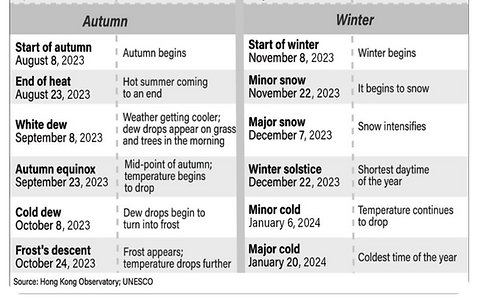

famine, and the Ming Dynasty was on the verge of collapse. "That was an astronomical crisis, or a calendar crisis, as well because when one dynasty was ending, that meant that the mandate of heaven was up for grabs, essentially," he says. "It's in this context where astronomy becomes absolutely crucial to political victories."
During this vulnerable time, another missionary presented a version of the Gregorian calendar to the Ming emperor. The emperor quickly adopted it in his last year as ruler, while still including culturally-significant dates like Lunar New Year. And Giovanetti-Singh says that once the Qing Dynasty took power, they were eager to continue using it because it allowed them to more accurately predict celestial anomalies like solar eclipses that, in turn, reinforced their supposed divine mandate of heaven to rule.
Over time, the Chinese government became seen as a prosperous agricultural leader. And around 100 years later, Europe is devastated by the Seven Years War, which Giovanetti-Singh says was fought mostly in agricultural fields, leading to grain crises and famine. Therefore, over history, the calendar of the East and the West fused together technically and culturally.
Long before the Spanish came to the Americas, the Aztecs were a thriving agricultural civilization with as many as 3 million people. A study published today in the journal Proceedings of the National Academy of Sciences (PNAS) details how the Mexica, or Aztecs, were able to achieve such an accurate agricultural calendar.
In addition to tracking leap years and the change of seasons with high accuracy, new research shows that the Mexica used the mountains of the Basin as a solar observatory, and kept track of the sunrise against the peaks of the Sierra Nevada mountains. One place they studied was Mount Tlaloc. The mountain at the east of the Basin had a temple at its summit. Using astronomical computer models, the team confirmed that a long causeway-like structure at the temple aligns with the rising sun on February 24. Depending upon which calendar (Gregorian or Julian) is used as a comparision, February 23 or 24 is the first day of the Aztec new year.

When viewed from a fixed point on Earth, the sun doesn’t follow the same trajectory every day. During the winter, the sun runs south of the celestial equator and rises toward the southeast. As the longer days of summer approach, the sunrise moves northeast due to the Earth’s tilt. This process is called solar declination.

.jpg)
The Maya calendar is a system of calendars used in pre-Columbian Mesoamerica and in many modern communities in the Guatemalan highlands, Veracruz, Oaxaca and Chiapas, Mexico. The Maya calendar consists of several cycles or counts of different lengths. The 260-day count is known as the Tzolkin. The Tzolkin was combined with a 365-day vague solar year known as the Haabʼ to form a synchronized cycle lasting for 52 Haabʼ called the Calendar Round. The tzolkʼin calendar combines twenty day names with the thirteen day numbers to produce 260 unique days. It is used to determine the time of religious and ceremonial events and for divination. Each successive day is numbered from 1 up to 13 and then starting again at 1. Separately from this, every day is given a name in sequence from a list of 20 day names.
Computus (Latin for "computation") is the method for calculating the date of Easter. In the early 4th century there was confusion about when Christian Easter or the Resurrection should be celebrated.
At the Arles Council, in 314, it was obliged to all the Christianity to celebrate Easter the same day, and that this date was going to be assigned by the Pope, that was going to send epistles to all the churches in the world with the necessary instructions. However, not all the congregations followed those precepts. In the First Council of Nicaea, in 325, this subject was solved. It was established that the Resurrection Easter had to be celebrated fulfilling some norms:
-
Easter had to be celebrated on Sunday.
-
It can not coincide with the Jewish festival of Passover, celebrated independently which day of the week it was.
-
Christians cannot celebrate Easter twice the same year. This is explained because the new year started in the spring equinox, so the celebration of Easter before the real equinox was prohibited.
The Saros cycle is an eclipse cycle of about 18 years 11 days 8 hours (about 6585⅓ days). A solar eclipse 18 years past will be similar with one 18 years in the future. This is because the Earth, Moon and Sun return to almost the same positions they were at 18 years ago. The first predictions of a solar eclipse using the Saros were made by Ancient Greek philosophers. The Saros period of 223 lunar months (in Greek numerals, ΣΚΓ′) is in the Antikythera Mechanism user manual on this instrument, made around 150 to 100 BCE in Greece, as seen in the picture. This number is one of a few inscriptions of the mechanism that are visible with the unaided eye.
The Metonic cycle is a period of about 19 years used in astronomy and calendar studies. In particular, it is often used in the structure of lunisolar calendars, because 19 solar years is almost exactly the same length of time as 235 lunar months. The recurrence is not perfect, and by precise observation the Metonic cycle defined as 235 synodic months is just 2 hours, 4 minutes and 58 seconds longer than 19 tropical years.
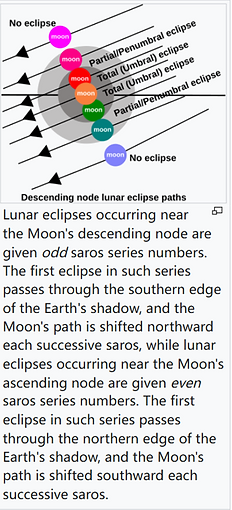
Nineteen years of 12 lunar months each would last a total of 19×12=228 lunar months. But from astronomy we know that 19 solar years are the same length as 235 lunar months. So over 19 years, 235−228=7 extra lunar months need to be added to make the years line up correctly. Adding a thirteenth month in a year is called intercalation. There are different ways to do it:
-
The ancient Babylonian calendar and the modern Hebrew (Jewish) calendar add an extra month just before the spring equinox on a regular schedule of years: years 3, 6, 8, 11, 14, 17 and 19 of each 19-year cycle
-
The modern Chinese calendar, and other Asian calendars that follow it, use a calculation of solar periods and moon phases to decide when to add the extra month
Divers exploring a Roman shipwreck off the Greek island of Antikythera in 1901 found the remains of a baffling device. Fifty years later scholars slowly began to unlock its ancient mystery. The Antikythera mechanism is the oldest known scientific calculator. A complex arrangement of over 30 gears could determine with remarkable precision the position of the sun, moon and planets, predict eclipses and track the dates of Olympic Games. This remarkable 2,000-year-old device has revolutionized our understanding of the ancient Greeks’ abilities—both their scientific acumen and their craftsmanship.


In 2005, a team from Cardiff University used computer x-ray tomography and high resolution scanning to image inside fragments of the crust-encased mechanism and read the faintest inscriptions that once covered the outer casing. This suggests it had 37 meshing bronze gears enabling it to follow the movements of the Moon and the Sun through the zodiac, to predict eclipses and to model the irregular orbit of the Moon, where the Moon's velocity is higher in its perigee than in its apogee. This motion was studied in the 2nd century BC by astronomer Hipparchus of Rhodes, and he may have been consulted in the machine's construction. There is speculation that a portion of the mechanism is missing and it calculated the positions of the five classical planets. The inscriptions were further deciphered in 2016, revealing numbers connected with the synodic cycles of Venus and Saturn. Machines with similar complexity did not appear again until the astronomical clocks of Richard of Wallingford in the 14th century.
Your weather app predicts a warm and dry afternoon; you wear a summer dress and you wind up drenched by an unexpected afternoon rainstorm. Research how meteorologists make weather forecasts and explore with your team: how far ahead in time is a weather forecast useful? How might AI prediction models change the field of meteorology? Be sure to also learn the difference between weather and climate models, and if they are still accurate in face of a changing climate.
Have you thought about how far in advance we can forecast the weather?
According to the Journal of Atmospheric Sciences, for midaltitude instantaneous weather is around 10 days. Because of the chaotic nature of the atmosphere, even very skillful forecasts extend out to about 14 or 15 days. Even though the American Meteorological Society strong advises against issuing specific forecasts beyond 8 days, popular weather vendor AccuWeather has been making 45-day and even 90 day forecasts since 2016. The reason they make these kind of "fortune-telling-ish" forecasts is probably for marketing. If it claims these forecasts have value, it should publish forecast verification and measured against accuracy, it loses value about 9-11 days out. Most forecasts rely on probability and how it is phrased can be generalization.
AI program GenCast performed better than ENS forecast at predicting day-to-day weather and paths of hurricanes and cyclones. GenCast, an AI weather program from Google DeepMind, performed up to 20% better than the ENS forecast from the European Centre for Medium-Range Weather Forecasts (ECMWF), widely regarded as the world leader. In a head-to-head comparison, it was better at predicting the paths of destructive hurricanes and other tropical cyclones, including where they would make landfall.

GenCast learned how global weather evolves by training on 40 years of historic data generated between 1979 and 2018. This included wind speed, temperature, pressure, humidity and dozens more variables at different altitudes. Given the latest weather data, GenCast predicts how conditions will change around the planet in squares of up to 28km by 28km for the next 15 days in 12-hour steps. While a traditional forecast takes hours to run on a supercomputer with tens of thousands of processors, GenCast takes only eight minutes on a single Google Cloud TPU, a chip designed for machine learning.
Even though it is very powerful, AI weather forecasts are not taking over physical tests which rely on complicated math and statistics. Also, AI is not yet so powerful to calculate the effects of the butterfly effect, the cascade of fast-growing uncertainties. With global warming and the weather becoming more and more erratic, is our physical computation skills the first ones to be out or AI's method of relying on historical data?
Weather forecasting is no easy thing and it requires complex mathematical representations of the Earth and its atmosphere to create weather and climate models. The Australian Community Climate and Earth System Simulator, for example, is comprised of millions of lines of computer code.
These models compile a range of factors – the Sun’s radiation, air and water flow, land surface, clouds – into mathematical equations. These equations are solved on a bunch of tiny three-dimensional grid boxes and pieced together to predict the future state. These boxes are sort of like pixels that come together to make the big picture. The finer the grid, the more super the computer.
The main differences between weather and climate come down to a single concept: “initialisation”, or the starting point of a model. If you start with the wrong facts, you can't get an accurate prediction. This is how weather forecasts works. But for climate model, it is run for centuries to produce its own equilibrium for a simulated Earth.
Because it is run for so long, a climate (also known as Earth system) model will need to account for additional, longer-term processes not factored into weather models, such as ocean circulation, the cryosphere (the frozen portions of the planet), the natural carbon cycle and carbon emissions from human activities. Constraints mean that we use less grid boxes for climate analysis.
A butterfly flaps its wings and a hurricane (eventually) pops to life on the other side of the world. Small changes can have large impacts that may not be as random (or unpredictable) as they seem. Explore the field of chaos theory, which attempts to understand how complex systems are built up from simple parts, then discuss with your team: are there examples of such systems in society, and can they help us tell the future? Be sure to explore the following terms:



In philosophy, systems theory, science, and art, emergence occurs when a complex entity has properties or behaviors that its parts do not have on their own, and emerge only when they interact in a wider whole. Emergence plays a central role in theories of integrative levels and of complex systems. The concept of "emergence" can be divided into two perspectives: "weak emergence" and "strong emergence."
In terms of physical systems, weak emergence is a type of emergence in which the emergent property is amenable to computer simulation or similar forms of after-the-fact analysis (for example, the formation of a traffic jam, the structure of a flock of starlings in flight or a school of fish, or the formation of galaxies). Crucial in these simulations is that the interacting members retain their independence. If not, a new entity is formed with new, emergent properties: this is called strong emergence, which it is argued cannot be simulated, analysed or reduced. Weak emergence describes new properties arising in systems as a result of the interactions at a fundamental level. The properties can be determined only by observing or simulating the system, and not by any process of a reductionist analysis.
Self-organization, also called spontaneous order in the social sciences, is a process where some form of overall order arises from local interactions between parts of an initially disordered system. The process can be spontaneous when sufficient energy is available, not needing control by any external agent. It is often triggered by seemingly random fluctuations, amplified by positive feedback.
Centralization is the process by which the activities of an organisation, particularly those regarding planning, decision-making, and framing strategies and policies, become concentrated within a particular group within that organisation. This creates a power structure where the said group occupies the highest level of hierarchy and has significantly more authority and influence over the other groups, who are considered its subordinates.An antonym of centralisation is decentralisation, where authority is shared among numerous different groups, allowing varying degree of autonomy for each.
Feedback occurs when outputs of a system are routed back as inputs as part of a chain of cause and effect that forms a circuit or loop. The system can then be said to feed back into itself. The notion of cause-and-effect has to be handled carefully when applied to feedback systems:
Positive feedback: If the signal feedback from output is in phase with the input signal, the feedback is called positive feedback.
Negative feedback: If the signal feedback is out of phase by 180° with respect to the input signal, the feedback is called negative feedback.
Chaos theory (or chaology) is an interdisciplinary area of scientific study and branch of mathematics. It focuses on underlying patterns and deterministic laws of dynamical systems that are highly sensitive to initial conditions. These were once thought to have completely random states of disorder and irregularities. The butterfly effect, an underlying principle of chaos, describes how a small change in one state of a deterministic nonlinear system can result in large differences in a later state (meaning there is sensitive dependence on initial conditions). A metaphor for this behavior is that a butterfly flapping its wings in Brazil can cause or prevent a tornado in Texas.
.jpg)



Flocking is the behavior exhibited when a group of birds, called a flock, are foraging or in flight. Sheep and goats also exhibit flocking behavior.
Computer simulations and mathematical models that have been developed to emulate the flocking behaviours of birds can also generally be applied to the "flocking" behaviour of other species. As a result, the term "flocking" is sometimes applied, in computer science, to species other than birds, to mean collective motion by a group of self-propelled entities, a collective animal behaviour exhibited by many living beings such as fish, bacteria, and insects.

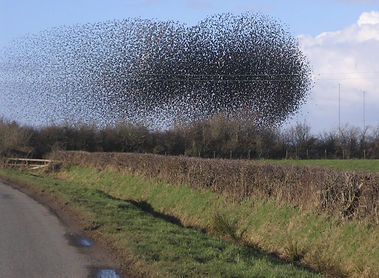
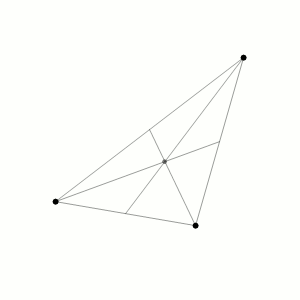
In physics, specifically classical mechanics, the three-body problem is to take the initial positions and velocities (or momenta) of three point masses that orbit each other in space and calculate their subsequent trajectories using Newton's laws of motion and Newton's law of universal gravitation. Unlike the two-body problem, the three-body problem has no general closed-form solution, meaning there is no equation that always solves it. When three bodies orbit each other, the resulting dynamical system is chaotic for most initial conditions. Because there are no solvable equations for most three-body systems, the only way to predict the motions of the bodies is to estimate them using numerical methods.
A fractal is a never-ending pattern. Fractals are infinitely complex patterns that are self-similar across different scales. They are created by repeating a simple process over and over in an ongoing feedback loop. Driven by recursion, fractals are images of dynamic systems – the pictures of Chaos. Geometrically, they exist in between our familiar dimensions. Fractal patterns are extremely familiar, since nature is full of fractals. For instance: trees, rivers, coastlines, mountains, clouds, seashells, hurricanes, etc. Abstract fractals – such as the Mandelbrot Set – can be generated by a computer calculating a simple equation over and over.


In common usage, randomness is the apparent or actual lack of definite pattern or predictability in information. A random sequence of events, symbols or steps often has no order and does not follow an intelligible pattern or combination. Individual random events are, by definition, unpredictable, but if there is a known probability distribution, the frequency of different outcomes over repeated events (or "trials") is predictable.
A parameter, generally, is any characteristic that can help in defining or classifying a particular system (meaning an event, project, object, situation, etc.).


The difference between stable and unstable equilibria is in the slope of the line on the phase plot near the equilibrium point. Stable equilibria are characterized by a negative slope (negative feedback) whereas unstable equilibria are characterized by a positive slope (positive feedback).
“Ripped jeans will be back in fashion in 20 years”, says one pundit. “We’ve been in a decade-long bull market, but just you wait for the bear market”, says another. Research the following popular “cycles” in public discourse today and explore with your team: what do they purport to predict, and how accurate are their predictions? Can a popular “cycle” ever become a scientific model?

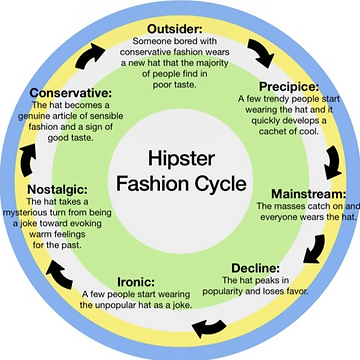
fashion cycle
The fashion cycle is a natural cycle by which a fashion trend is introduced, rises to mainstream popularity, declines, and finally gets rejected in the obsolescence stage. The cycle is usually depicted as a bell-shaped curve encompassing five stages:
-
Introduction
-
Rise in popularity
-
Peak of popularity
-
Decline in popularity
-
Rejection
It has been argued that there is a nostalgia cycle. Various durations of this cycle have been alleged, including epicycles (ie nostalgia for the last nostalgia cycle). It has been said that, if a twenty year nostalgia cycle applied, then 1980s nostalgia would have ended circa 2010. It has been argued that the nostalgia cycle has been disrupted, and thus has ceased to exist, or changed its duration to become longer or shorter; and it has been argued that the internet is what disrupted it.
For pop culture, they argue that people are forever obsessed with a nostalgia pendulum that regularly resurfaces things from 30 years ago. There are a number of reasons why the nostalgia pendulum shows up, but the driving factor seems to be that it takes about 30 years for a critical mass of people who were consumers of culture when they were young to become the creators of culture in their adulthood. The art and culture of their childhood (e.g. Teenage Mutant Ninja Turtle comics in 1984) helped them achieve comfort and clarity in their world, and so they make art that references that culture and may even exist wholly within that universe (e.g. the Teenage Mutant Ninja Turtles 2014 film reboot, 30 years later). It can be explained equally well from the consumer side. After about 30 years, you’ve got a real market of people with disposable income who are nostalgic for their childhoods. So artists working in popular mediums are rewarded for making art that appeals to this audience.

A news cycle refers to the time period between the release of one edition of a news outlet and the next. It typically involves the media reporting on an event, followed by coverage of public reactions to that event. In the context of the 24-hour news cycle, this term describes how news is continuously reported and updated, significantly influencing how news is consumed and disseminated. With the advent of social media everyone contributes to the news and the digital tsunami just continues to spread and ripple outward.
Business cycles are intervals of general expansion followed by recession in economic performance. The changes in economic activity that characterize business cycles have important implications for the welfare of the general population, government institutions, and private sector firms. There are many definitions of a business cycle. The simplest defines recessions as two consecutive quarters of negative GDP growth.

Business cycles are usually thought of as medium term evolution. They are less related to long-term trends, coming from slowly-changing factors like technological advances. Further, a one period change, that is unusual over the course of one or two years, is often relegated to “noise”; an example is a worker strike or an isolated period of severe weather. The individual episodes of expansion/recession occur with changing duration and intensity over time. Typically their periodicity has a wide range from around 2 to 10 years.
Usually such sources are unpredictable in advance and can be viewed as random "shocks" to the cyclical pattern, as happened during the 2007–2008 financial crises or the COVID-19 pandemic.

-
Accumulation Phase: Accumulation occurs after the market has bottomed and the innovators and early adopters begin to buy, figuring the worst is over.
-
Mark-up Phase: This occurs when the market has been stable for a while and moves higher in price.
-
Distribution Phase: Sellers begin to dominate as the stock reaches its peak.
-
Downtrend: Downtrend occurs when the stock price is tumbling down.
Eroom's law is the observation that drug discovery is becoming slower and more expensive over time, despite improvements in technology (such as high-throughput screening, biotechnology, combinatorial chemistry, and computational drug design), a trend first observed in the 1980s. The inflation-adjusted cost of developing a new drug roughly doubles every nine years. In order to highlight the contrast with the exponential advancements of other forms of technology (such as transistors) over time, the name given to the observation is Moore's law spelled backwards. Four possible causes for this law are:
-
The 'better than the Beatles' problem: The sense that new drugs only have modest incremental benefit over drugs already widely considered as successful. This problem was phrased as "better than the Beatles" to highlight the fact that it would be difficult to come up with new successful pop songs if all new songs had to be better than the Beatles.
-
The 'cautious regulator' problem: The progressive lowering of risk tolerance seen by drug regulatory agencies that makes research and development (R&D) both costlier and harder.
-
The 'throw money at it' tendency: The tendency to add human resources and other resources to R&D, which may lead to project overrun.
-
The 'basic research–brute force' bias: The tendency to overestimate the ability of advances in basic research and brute force screening methods to show a molecule as safe and effective in clinical trials. but which still often fail in clinical trials due to an under-appreciation of the complexity of the whole organism.
Enshittification, also known as crapification and platform decay, is the term used to describe the pattern in which online products and services decline in quality over time. Initially, vendors create high-quality offerings to attract users, then they degrade those offerings to better serve business customers, and finally degrade their services to users and business customers to maximize profits for shareholders. Enshittification was first used by Cory Doctorow in a November 2022 blog post. Two recommendations to solve this are:
1) Respect of the end-to-end principle, which holds that the role of a network is to reliably deliver data from willing senders to willing receivers.
2) right of exit, which holds that users of a platform can easily go elsewhere if they are dissatisfied with it. For social media, this requires interoperability, countering the network effects that "lock in" users and prevent market competition between platforms.
Not all products exhibit a bathtub curve failure rate. A product is said to follow the bathtub curve if in the early life of a product, the failure rate decreases as defective products are identified and discarded, and early sources of potential failure such as manufacturing defects or damage during transit are detected. In the mid-life of a product the failure rate is constant. In the later life of the product, the failure rate increases due to wearout. Many electronic consumer product life cycles follow the bathtub curve.
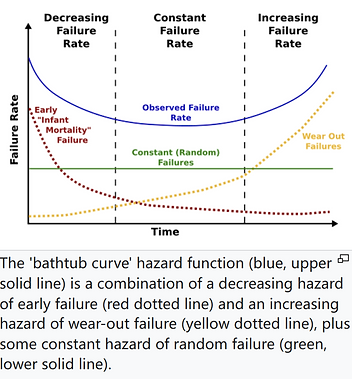



.jpg)

